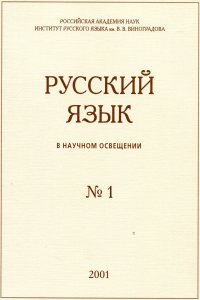Epenthetic ъ and ь in a 1296 Russian Church Slavonic manuscript
Abstract:
The paper analyzes the functions of the so-called epenthetic ъ and ь in a Russian Church
Slavonic manuscript dated from 1296, which contains The Life of Saint Simeon the Stylite and
The Pandects of Nikon of the Black Mountain (SHM, Synod. 836, 180 f.). Spellings with
epenthetic ъ and ь as well as extremely rare spellings of the Old Church Slavonic type are
considered against the background of standard early and late Old Russian spellings. The
distribution of spelling variants across different handwritings and parts of the manuscript is
analyzed. Possible reasons for the variety of options are investigated. We discuss the most
common explanations for the presence of epenthetic ъ and ь in the reflexes of muta-cumliquida
clusters in manuscripts. The paper argues that the appearance of non-etymological ъ
and ь is due to two factors: epenthesis splitting a consonant cluster, which was reflected in the
spelling, and a rule stipulating that lines should end in vowel letters. Data from other sources
dating from the late Old Russian period (a 1356 Prologue, two manuscripts of Prologue from
the second half of the 14th century, a 1358 Moscow Gospel) to a large extent follow these
principles.
The paper also raises the question of the relation between the spelling norm and live
pronunciation as reflected in the manuscript. The suggestion made by some researchers that
epenthetic ъ and ь could have had a purely orthographic nature is rejected. The author comes
to the conclusion that the spelling norm reflected in the manuscript most likely prescribed the
use of standard Old Russian models ТъrТ or ТоrТ, while epenthetic ъ and ь appeared in
written text only as errors.


